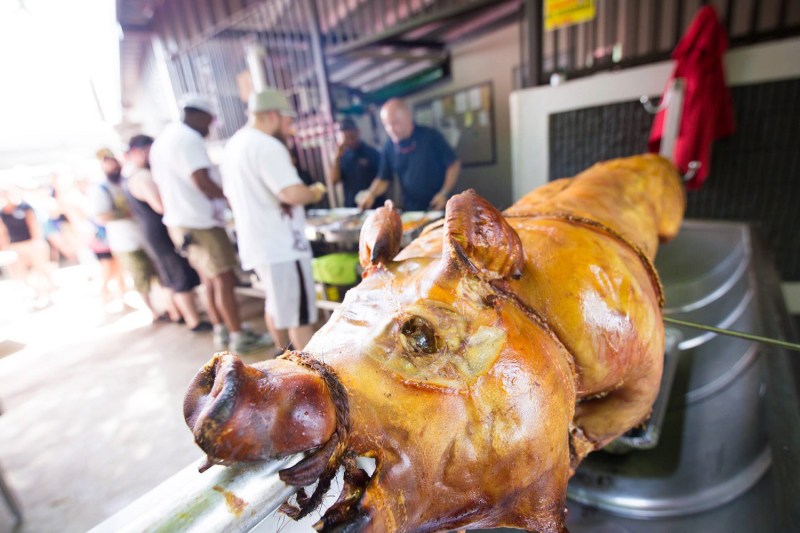Pork is a staple across Latin America, but few places showcase the simplistic beauty of the meat than the “Pork Highway” in Puerto Rico. While pork hasn’t been integral to Puerto Rico’s cuisine for the entirety of its history, pigs were brought by Columbus, so residents of the island have had a few centuries to perfect their pork-cooking techniques (for which we are very, very thankful).
The dozens of restaurants that make up the “La Ruta del Lechón,” or “Pork Highway,” have become a bit of a tourist excursion of late, but this doesn’t stop the locals from also continuing to congregate as the delicious menu options provide a roadside oasis. With pigs roasting on open spits, their skin crispy and gorgeously caramelized and meat that tastes like heaven, it’s not hard to see why it’s become so popular.

For most meat eaters, hearing the words “Pork Highway” quickly elicits excitement and a breathless, “I can’t wait to get there.” That’s all for good reason. If you’ve got the meat sweats already, it’s OK— we won’t judge.
To get to the Pork Highway, you’ll need to head about 30 miles south of San Juan to the area known as Guavate. The Pork Highway is a couple mile stretch along Route 184.
To get to the Pork Highway, you’ll need to head about 30 miles south of San Juan to the area known as Guavate. The Pork Highway is a couple mile stretch along Route 184.
The Pork Highway used to be a hidden gem among Puerto Ricans and visitors to the island, but thanks to the Travel Channel and food and travel stars like Andrew Zimmern and the late Anthony Bourdain, it’s become a must stop for foodies checking out the island.
While there’s plenty to debate about the evils of such publicity, the Pork Highway offers an incredible array of deliciously prepared, yet simple, Puerto Rican dishes. The pigs roast for eight hours before being skillfully broken down behind the counters with machetes.
Each part of the pig is used, from the succulent shredded meat to the crispy skin to the head. For adventurous eaters, snout to tail is available, including tongue, brain, or intestines.
Heaping piles of the pork are served alongside side dishes like savory smashed yuca — the root of the cassava plant — peas, crispy pork and rice, and twice-fried plantains. Pretty much everything has at least a touch of pork.

If you find yourself on the pork highway and swine isn’t your thing, the chicken and blood sausages are also among the most delightful morsels ever popped into a mouth sitting on the side of a road. Also delicious are the pasteles, a tamale-like dish made with using pork, squash, and green banana, then wrapped in banana leaves and boiled. Serve it all alongside a cold Medalla beer and the meal is one not easy to forget, despite its simplicity.
On weekdays, the Pork Highway isn’t overly busy — just a steady crowd of hungry people seated at the covered picnic tables. On weekends, however, it sounds (The Manual didn’t get to experience a weekend) like all bets are off and the party begins.
Now, to find a way to connect the barbecue trails of the American South with the Pork Highway …


